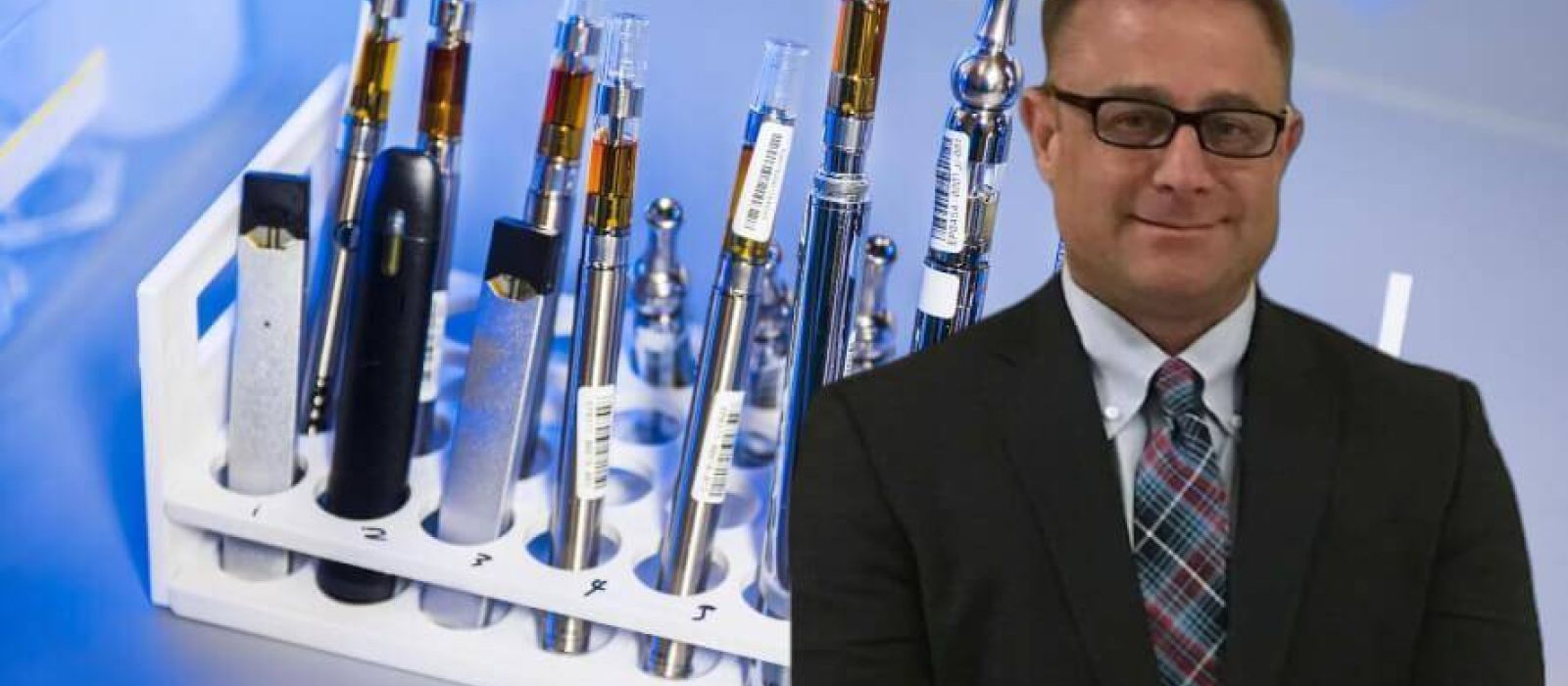

If we don’t win, you don’t pay.
NO WIN – NO FEE

ON CALL 24/7

U.S. Marine

So where do we stand as parents and consumers suffering the consequences of an exploding, or defective electronic cigarette? How do we deal with these lithium ion batteries inside used by the notorious and defective Samsung Galaxy Note 7 and hoverboard products?
With the growing younger generation population, the vape (e-cigarettes or electronic cigarettes) industry is also on the rise. At first, people looking to quit smoking would turn to purchase a vape. However, today, with so many unique flavors on the market, the younger generation is getting hooked on these for nicotine without the bad cigarette taste.
People argue that vape devices are safer to consume than traditional cigarettes. But victims fail to realize that these electronic devices and the electrodes inside pose a threat that makes them dangerous to everyone that could lead to death or painful skin grafting procedures.
Big Tobacco Gets into Electronic Nicotine Delivery Systems
Firstly, the earlier, loose regulations over faulty products like electronic cigarettes by the U.S. Food and Drug Administration (FDA) had led the big tobacco companies to enter the market and take a big chunk of consumers. This is dangerous as the lack of oversight and corporate greed only cause harm to the buyers of their products. Secondly, these devices have had a bad history of exploding and causing injuries to the users. Have you seen the stories of the pain and suffering people face when they are injured by an exploding Juul cigarette?
Today, you may not hear about vape explosion incidents or injuries so much as back then, but they are still prevalent worldwide. If you suffered injuries from a vape explosion, contact Ehline Law and our California vape explosion accident attorney to learn your rights.
The Rise of Juul Electronic Cigarettes: Innovation and Addiction
In the past 50 years, the consumption of cigarettes in the United States has seen a gradual decline as anti-tobacco advocates pushed for laws restricting advertisements and launched public health awareness campaigns against smoking.
However, these restrictions and negative propaganda against big tobacco companies led to teenagers looking for alternatives. In the early 2000s, two graduates, Adam Bowen and James Monsees, met at Stanford University and soon became smoking buddies. However, they wanted to quit their smoking habit, which led them to design an e-cigarette that would offer all the pleasures of smoking without the carcinogenic risks.
Big tobacco companies recognized the opportunity in such a market and began investing millions of dollars at the time in the development of e-cigarettes. However, the market for these products was sluggish as none of them offered the perfect combination of taste, branding, and distribution until 2015, when Bowen and Monsees launched Juul.
Juul products were sleek (they looked like USB drives), tasted amazing, and were directly marketed to young people. Carrying a Juul was so convenient and became an instant hit with high schoolers. Juul surpassed the $10 billion valuation threshold faster than any other company, including Facebook.
Fashionable colors attracted attention, and social media influencers created trends and campaigns to promote these devices. In 2018, a survey revealed that 21% of high schoolers had vaped in the past 30 days.
A product launched as a disrupter of big tobacco attracted so much attention that in 2018, Altria Group (parent company of Phillip Morris) purchased a 35% stake in Juul for $12.8 billion. Today some of the most popular e-cig brands are now owned by Big Tobacco.
If you suffered injuries from a Juul device, reach out to our Juul battery injury accident explosion lawyer today to learn your rights.
Vape: What is it, and Can its Lithium Ion Batteries Explode?
E-cigarettes are also known by many names, such as vape pens, tank systems, e-cigs, e-hookah, and vape, among many others. A vape, or an e-cig, is an electronic device that helps deliver nicotine through heated vapor. These electronic nicotine delivery systems come in many shapes and sizes, some resembling traditional cigarettes to give consumers the feel of smoking one.
In 2006, in the United States, vaping products took to the shelf and became an instant hit. From then on, these devices have become more sophisticated and can now deliver more than just nicotine, including illicit drugs such as THC, LSD, ketamine, and more. In 2018, data from the National Health Interview Survey indicated that there are more than 8.1 million current e-cigarette users in the country.
To deliver nicotine using vapes, these devices have a heating element that vaporizes the liquid solution, which is also commonly referred to as “juice.” To operate the heating element, the electronic nicotine delivery system needs some form of electric power and this is where the battery comes in. Users either drag on the vape to operate the heating element or press a manual button, depending on the type of vape they own. The heating element heats the vapor, turning it into a thick cloud of smoke that the users inhale to derive pleasure.
The concerning part about vaping is holding a device with a heating element and an active lithium-ion battery to your lips. Although these manufactured devices come with built-in safety features, there is still a risk of operating a battery at an elevated heat level, which can lead to the e-cigarette batteries (lithium ion batteries) catching fire or an explosion.
To understand why a battery may explode, it is crucial to know what it consists of. A Li-ion battery consists of multiple layers of the negatively charged metallic anode and a positively charged cathode that are separated by a porous film.
This microperforated plastic that separates these layers contains a flammable liquid electrolyte. During charging, the lithium ions move from the cathode through this microperforated plastic and the flammable liquid into the anode. When a battery is not charging, the flow of power reverses from anode to cathode.
When a lithium-ion battery heats up to a certain extent, it can cause the flammable electrolyte to explode. Overcharging, short-circuiting, product defects, and puncture are just a few of the causes of a battery overheating leading to a personal injury claim.
In the past, there were numerous cases of users injured or killed due to exploding vapes. An explosion can occur instantly, allowing no time for the user to guard themselves against serious injuries.
Although there are steps that a consumer can take to minimize the chance of cigarette, lithium ion batteries from exploding they don’t always guarantee the safety of the battery, meaning that there will always be a risk of severe injuries from an exploding vape pen, or even popcorn lung cancer.
Common Causes of Lithium-ion Battery Failing
Vape explosions can occur when the battery heats up to a certain extent, causing a chain reaction resulting in a vape battery explosion.
Let’s look into the common causes of lithium-ion batteries failing and leading to e-cig explosion injuries.
Faulty Design
During charging, poor battery designs can cause the battery to expand, bending the electrodes and leading to a short circuit. However, even a well-designed battery can explode due to manufacturing defects as a result of inadequate quality control. This has led the FDA to more aggressively regulate e-cigarettes.
External Factors
Excessive heat is the vape device’s number one enemy as it can cause the vape to explode. However, other factors can damage the battery, resulting in an explosion, and these can include dropping the vape or piercing the battery, which can often result in a short circuit.
Charger Problems
A short-circuited charger or one that generates too much heat can also damage the vape device. Although vape devices have built-in protection to stop the device from overcharging, these protections can fail. Overcharging can cause overheating, and when a lithium-ion battery overheats, it can result in an explosion.
Burn and Injury Incidents from Vape Explosions
E-Cigarette Explodes in Teenager’s Mouth, Damaging his Jaw
In March 2018, Kailani Burton purchased a vape device kit for his 17-year-old son Austin to help him quit smoking. One day, Burton and her husband were sitting in their living room when they heard a loud pop. After a while, their son rushed into the living room, holding his bloodied jaw in a state of panic.
The family rushed their son to a nearby hospital in Ely, Nev., a remote mountain town. However, the doctors over there suggested Burton take her son to a trauma center, which was almost 200 miles away. Upon reaching the nearest trauma center, the surgeons immediately provided medical care and treatment to Austin.
The 17-year-old boy had serious fractures in his jaw, a couple of missing teeth, and a 2-centimeter piece was also missing due to the explosion. Burton stated that she had purchased the popular VGOD vape device and believed that it was the defective battery that caused the explosion.
Other Reported Vape Explosions
According to the United States Fire Administration (USFA), there were around 25 reported cases of vape explosions between the years 2009 and 2014. Nine of the reported cases involved injuries, of which two were severe burns. A report last year stated that there were approximately 2,035 e-cigarette explosions and burn injuries in the country between 2015 and 2017 alone.
Let’s look at some of the vape explosion incidents in the country that resulted in serious injuries to the user:
- In Idaho, in 2017, a man smokes out from his vape device when it exploded in his face, resulting in second-degree burns and several missing teeth.
- In Indiana, in 2016, a truck driver was driving a big rig when his electronic cigarette ignited suddenly, causing a distraction and resulting in the driver losing control of his vehicle. The accident resulted in facial injuries requiring immediate hospital treatment.
- In 2015, a grim incident in Florida shocked the entire state when a vape blew in a man’s face He lost some of his teeth, had facial fractures, and even experienced a broken neck.
- In Florida, in 2015, a grim incident shocked the entire state when a vape blew in a man’s face. It not only burned his face and neck, but due to the force of the explosion, the vape went down his neck and exploded once again, causing internal damage. The man was immediately rushed to a hospital and placed into a medically induced coma.
- In Bakersfield, in 2015, a man was smoking a small e-cigarette when it blew up in his face. The e-cigarette explosion damaged his mouth and also his index finger. He was immediately rushed to the hospital, where the surgeons amputated his finger.
- In 2015, a vape exploded in a young boy’s mouth in Georgia, resulting in serious injuries. The incident made headlines when his father reported that the explosion resulted in a hole in the boy’s palate and that the flames burned the insides. The injured victim had burn injuries to his hand, face, and even cornea. He also had a fractured neck from the explosion.
- In Ramona, in 2015, a vape exploded in a man’s face, resulting in burns and lacerations.
- In Corona, in 2013, a man was charging his vape in his car when it resulted in a blow torch fire. The debris from the fire flew into the driver’s lap, resulting in second-degree burns to the thighs and buttocks.
- In Texas in 2013, a man had recently charged his vape for two hours when it blew in his hand, resulting in serious second and third-degree burns. He also suffered from smoke inhalation due to the explosion.
- In Florida in 2012, according to some news reports, a man who modified his vape caused an explosion in the man’s mouth. The battery explosion resulted in serious burn injuries to the mouth and tongue, loss of teeth, and destroyed part of his tongue.
- In Greely, in 2011, an e-cigarette exploded in a man’s mouth and sent the flaming debris and the burning battery acid into his mouth, face, and eyes. The e-cig explosion resulted in an 8-day hospitalization.
Why You Can’t Vape on Airplanes
In 2015, the United States Pipeline and Hazardous Materials Safety Administration (PHMSA) banned the carrying of any battery-powered portable electronic smoking devices, including vape and e-cigarette devices. This interim rule came into effect after multiple recorded cases of vape explosions surfaced. Fire hazard is a serious risk during flight, and vapes pose a certain fire risk that the authorities are not willing to take.
According to the Federal Aviation Administration (FAA), smoking a vape or a cigarette on an airplane is a federal offense. Passengers can bring these devices on the airplane with them, but they must be carefully packed with their lithium-ion batteries removed and checked into carry-on luggage.
Safety Tips to Help Avoid Vape Explosions
If left unchecked, vape explosions can not only injure the user but also cause property damage from the fire.
The FDA recommends following these safety tips to help prevent any vape explosions:
- Consider purchasing vape devices that come with various safety features such as firing button locks, overcharging protection, and others.
- Keep loose batteries in a safe case away from keys, coins, and other metals in your pocket.
- Always use the vape charger that comes with the device to charge the vape and avoid using other chargers such as your phone charger.
- Don’t charge your vape overnight or leave the device unattended when charging.
- If your vape batteries are wet or damaged batteries, replace them immediately.
- Use the cigarette use batteries that come with your device and avoid switching out the batteries or mixing and matching.
- When charging your vape, lay it on a clean flat surface, away from any material that could easily catch fire, such as your pillow, couch, and so on.
- Keep your vaporizer away from direct sunlight and extreme temperatures. Don’t leave the vape in your car on a sunny day or during cold nights. Also, do not charge the vape in extreme temperatures.
- Just like how one would avoid smoking around flammable gases or liquids, don’t vape around these.
How Can a Vape Explosion Lawyer Help?
Although the vape industry remains loosely regulated, there are product laws and regulations in place to protect consumers. A product that does not work as intended and causes injuries to the user creates grounds for a product liability claim, whereby you file a claim against the manufacturer for selling you a defective product.
A vape explosion can cause serious injuries to the user, leaving them with debilitating injuries and a couple of thousand dollars in medical expenses. If you suffered injuries from a defective vape that exploded, our California vape explosion attorneys can help investigate your case and provide you with the legal representation you deserve.
Schedule a Free Consultation With a Vape Accident Explosion Attorney in Los Angeles
Proving product liability can be challenging, but it is even more difficult to determine who is at fault for your injuries. Manufacturers are only liable for damage caused by defective products, and our attorneys will thoroughly investigate your case to prove it was the manufacturer’s fault that resulted in your injuries.
Our lead e-cig explosion attorney at Ehline Law has substantial experience in handling product liability claims and achieving superior results. If you suffered injuries from a vape explosion, contact us at + (833) LETS-SUE for a free consultation with our legal experts, as you may be eligible for compensation after being injured by design defects inherent in Juul e-cigarette use.
- Product Defect & Recall
- Galaxy Note 7s and Fires Recall
- Baby Sling Recall Lawsuit Information
- Bluelight Blindness
- Bouncy House Injury
- Dangerous Chemicals
- Diaphyseal Sleeve Malfunction Lawsuits
- E-Cigarettes
- Juul Recall/Ban
- Fire Extinguisher Recall Attorney
- Food Poisoning
- Opioid Lawsuit Attorney
- Oxygen Tank Injury Attorney in Southern California
- Segway Recalls
- The Vesper Board, Related Technology & Personal Injuries
- Property Damages Lawyer
California injury law firm with locations in Northern, Southern, and Central California.

